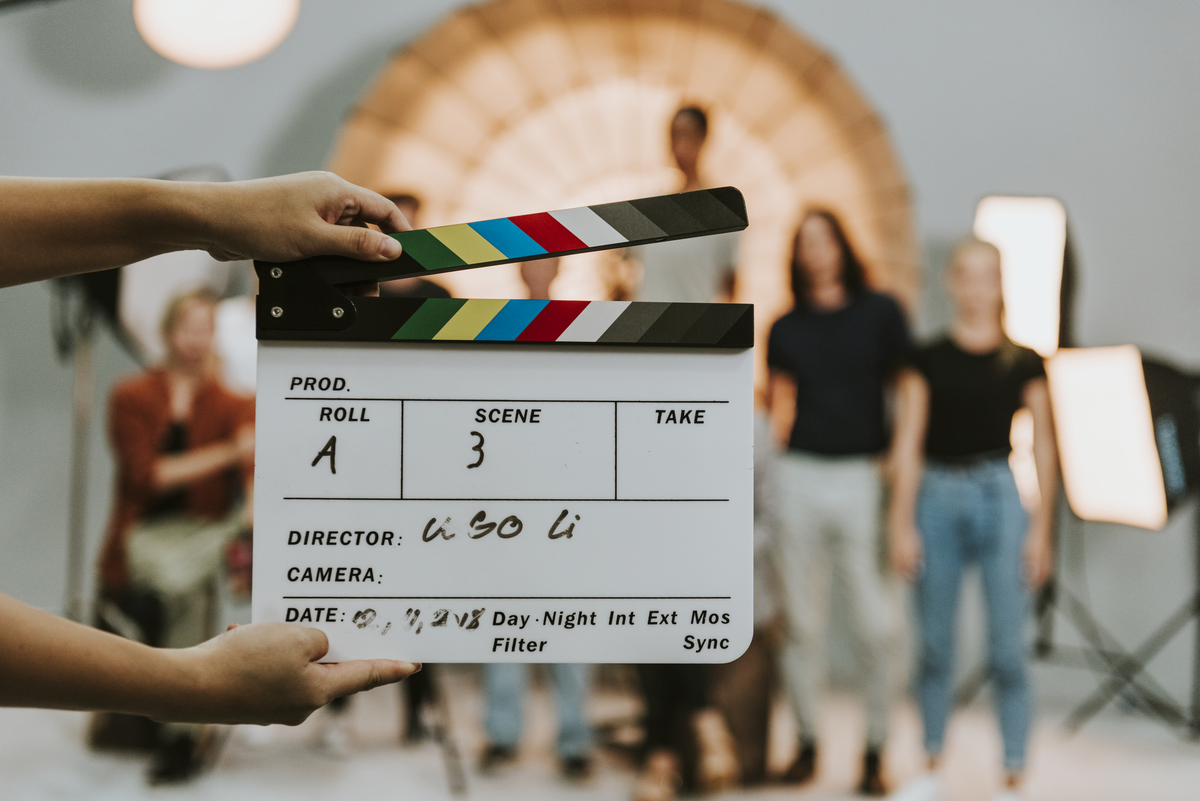But it’s not just about what appears on screen; computer technology has reshaped every facet of filmmaking. From pre-production to post-production, from scriptwriting to sound design, digital tools streamline processes and amplify creativity. Think of it as a director’s toolkit on steroids—where editing software turns raw footage into cinematic gold, and AI algorithms predict audience preferences with uncanny precision.
Moreover, the democratization of filmmaking is at its zenith. Armed with a smartphone and the right apps, anyone can become a filmmaker, capturing moments and telling stories that resonate globally. This accessibility sparks a new wave of diverse voices and narratives, enriching the cinematic tapestry.
But with every advancement comes questions. Will CGI replace practical effects entirely? Can algorithms truly predict the next blockbuster? The answers lie in the evolution of storytelling itself—a dance between tradition and innovation, where technology serves as both muse and medium.
As we navigate this brave new world where pixels paint pictures and algorithms dictate trends, one thing remains certain: computer technology isn’t just changing the film industry; it’s rewriting the script, scene by scene, frame by frame.
From CGI to AI: The Evolution of Special Effects in Modern Cinema
Imagine a time when filmmakers used hand-drawn animations or miniatures to create fantastical worlds or bring mythical creatures to life. It was a painstaking process that required meticulous attention to detail and hours of manual labor. These early pioneers laid the groundwork for what would become a revolution in visual storytelling.
Fast forward to the digital age, where CGI has become synonymous with Hollywood magic. With computer-generated imagery, filmmakers can conjure up entire cities, unleash otherworldly creatures, and simulate epic battles on a scale never before imagined. The level of realism achievable today is mind-boggling, blurring the line between fantasy and reality.
But the evolution doesn’t stop there. Artificial intelligence is now making its mark in special effects, revolutionizing how movies are made. AI algorithms can analyze vast amounts of data to create stunning visual effects, predict audience reactions, and even help with complex tasks like facial recognition and motion capture. This technology isn’t just a tool for filmmakers; it’s becoming a creative partner in the filmmaking process.
Take, for instance, the use of AI in deepfake technology, where algorithms can seamlessly blend one person’s face onto another’s body, creating incredibly realistic but entirely fabricated scenes. While controversial, this technology showcases the immense potential of AI to reshape not only how we perceive cinema but also how stories are told.
As we look to the future, the evolution of special effects in modern cinema promises even more breathtaking innovations. From CGI spectacles that transport us to new worlds to AI-driven narratives that challenge our perceptions, the journey from humble beginnings to cutting-edge technology is a testament to the boundless creativity of filmmakers and the enduring allure of the silver screen.
Virtual Sets and Real Emotions: How Tech is Redefining Film Production
Imagine stepping onto a movie set where the bustling streets of New York or the serene landscapes of Iceland are not real but incredibly lifelike. Welcome to the world of virtual sets, where technology is reshaping the way films are made and emotions are captured. In recent years, advancements in virtual production have revolutionized the film industry, offering filmmakers unprecedented creative freedom and cost-effective solutions.

But it’s not just about convenience. Virtual sets have the power to evoke real emotions from both actors and viewers. Imagine an actor standing in front of a green screen, surrounded only by cameras and crew. Despite the lack of physical surroundings, the actor can see and interact with a virtual environment through high-resolution displays. This immersive experience helps them deliver authentic performances, reacting genuinely to their surroundings even if those surroundings are purely digital.
Moreover, virtual production enhances collaboration among filmmakers. Directors can visualize scenes in real-time, adjusting lighting, backgrounds, and camera angles on the fly. This interactive process fosters creativity and allows for instant feedback, ensuring that every shot captures the intended mood and atmosphere.
In essence, virtual sets are not just a technological marvel but a game-changer for the film industry. They blend the art of storytelling with cutting-edge technology, offering filmmakers new tools to create immersive worlds and evoke genuine emotions. As technology continues to evolve, one thing is certain: virtual sets are here to stay, redefining how films are produced and experienced.
Digital Actors on the Rise: Can CGI Replace Human Performances?
The world of entertainment is evolving faster than ever before, and one of the most intriguing advancements is the rise of digital actors. Picture this: lifelike characters, brought to the screen not by human actors, but by cutting-edge computer-generated imagery (CGI). It’s a concept straight out of science fiction, but it’s increasingly becoming a reality in today’s film and television productions.
CGI has come a long way since its humble beginnings. What started as basic animations has blossomed into incredibly realistic digital creations. Think of your favorite blockbuster movies featuring breathtaking creatures or jaw-dropping action scenes—many of these wouldn’t be possible without CGI. The technology has become so advanced that it can now render human-like characters with astonishing detail and emotion.
But here’s the burning question: can CGI truly replace human performances? It’s a debate that sparks curiosity among cinephiles and industry experts alike. On one hand, CGI offers unparalleled flexibility and creativity. Directors can bring any imagined character to life without the limitations of human actors—no scheduling conflicts, no egos, just pure artistic vision.
Yet, on the other hand, human performances have a depth and nuance that CGI struggles to replicate. There’s something about the subtle expressions, the intonations in voice, and the raw emotion that only a skilled human actor can deliver. Imagine your favorite dramatic scenes—would they evoke the same emotion if portrayed by a digital avatar?
Despite these challenges, CGI is making significant strides. In recent years, we’ve seen digital actors take on supporting roles and even lead parts in major productions. The technology continues to push boundaries, blurring the line between what’s real and what’s computer-generated.

Harnessing Big Data: How Algorithms Are Shaping Box Office Hits
Big data has revolutionized the way movies are made and marketed. From script development to post-production, every stage benefits from the analysis of vast amounts of data. Algorithms crunch numbers from social media trends, viewer demographics, historical box office data, and even audience sentiment analysis to identify potential hits. This data-driven approach isn’t just a trend; it’s a game-changer.
Imagine algorithms as master puzzle solvers, piecing together the intricate preferences of millions of viewers. They sift through terabytes of data to uncover patterns and correlations that guide filmmakers and studios in decision-making. For instance, an algorithm might predict that a certain genre pairing or casting choice could significantly boost a film’s appeal in specific demographics.
Moreover, these algorithms are not just limited to pre-production. They continue to work their magic post-release, analyzing real-time audience reactions and box office performance. This real-time feedback loop allows studios to tweak marketing strategies on the fly, optimize distribution channels, and even influence sequels or spin-offs based on audience reception.
In essence, algorithms have become the unsung heroes of the film industry, providing invaluable insights that shape everything from plot development to promotional campaigns. They help filmmakers navigate the ever-changing landscape of audience preferences with precision and agility, turning data into blockbuster gold.
The Rise of Virtual Reality Filmmaking: Exploring New Dimensions
Traditional filmmaking has always been about capturing scenes from a fixed perspective, but VR changes the game entirely. Directors and creators can now transport viewers to any location, whether it’s the bustling streets of Tokyo or the serene tranquility of a coral reef, all from the comfort of their living rooms. This technology isn’t just about watching a story unfold; it’s about living it.
One of the most exciting aspects of VR filmmaking is its ability to evoke emotions in ways traditional media can’t match. When you put on a VR headset, you’re not just watching characters on a screen—you’re right there with them. You can look around, explore details, and feel like you’re part of the narrative. It’s an experience that’s as close to reality as you can get without actually being there.
Creators are also experimenting with interactive storytelling in VR. Imagine being able to influence the plot based on your choices or even interact with characters in real-time. This level of engagement not only keeps viewers captivated but also opens up endless possibilities for creative storytelling.
From a technical standpoint, VR filmmaking presents its own set of challenges and innovations. Filmmakers must consider how to capture scenes in 360 degrees, ensuring that every angle contributes to the story. Sound design plays a crucial role too, as it helps guide viewers’ attention within the virtual environment.
As VR technology continues to evolve, so too will the possibilities for storytelling. Whether you’re a filmmaker, a storyteller, or simply someone who loves immersive experiences, VR filmmaking promises to take you on journeys beyond imagination. Get ready to explore new dimensions and discover stories in ways you never thought possible.
